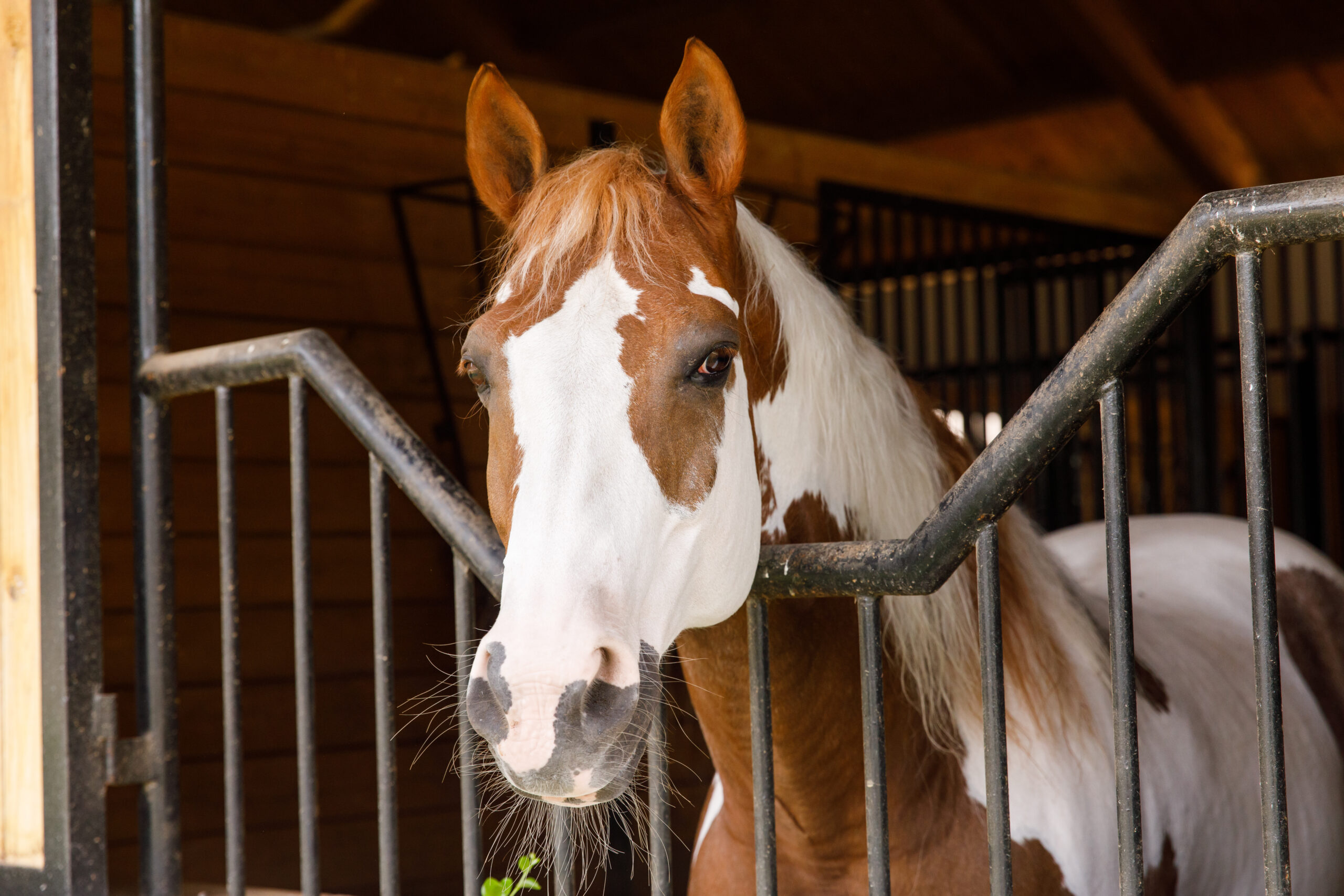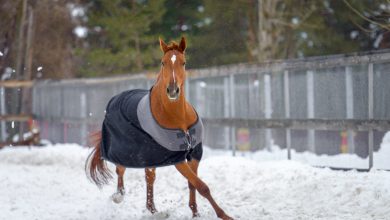
Strangles is a common problem among horse populations, and can be frustrating to treat. It is highly contagious, and although rarely fatal, can rip through your barn like wildfire. Using basic biosecurity measures can help keep strangles from spreading, and mitigate the effects.
This condition in horses is the result of an infection created by the Streptococcus equi bacterium. The disease can be transmitted through direct interaction with other horses or exposure to infected materials. Even horses that don’t display clinical symptoms can carry and spread the bacteria. Even more frustratingly, horses that have recuperated from the infection can still spread it for a minimum of six weeks, potentially triggering long-term outbreaks. This means that your horse can appear to be over the infection, but is still contagious.

Symptoms
From our sister publication, The Horse: “The first sign of infection is usually a fever, which occurs three to 14 days after exposure. The horse might then develop nasal discharge and enlarged submandibular lymph nodes, which appear as a swelling under the jaw. Horses might have difficulty swallowing and, in severe cases, breathing—hence the name strangles. The disease tends to affect younger horses more severely than older ones.”
Horses affected by this condition may display several clinical indicators such as:
- High temperature
- Enlarged and/or abscessed lymph nodes
- Runny nose
- Coughing or wheezing
- Swelling in the muscles
- Difficulties in swallowing
Diagnosis
The diagnosis of strangles in horses is predominantly carried out by veterinarians using polymerase chain reaction (PCR) testing. This testing can be conducted with a nasal swab, wash, or an abscess sample. Treatment strategies are largely dependent on the clinical symptoms displayed by the horse; in severe scenarios, antibiotics are prescribed. However, excessive use of antibiotics may hinder the development of immunity in the infected horse. Most horses typically fully recover within three to four weeks.
Vaccines
From The Horse: “Currently, two vaccines are available in the United States: an extract intramuscular vaccine and a modified-live (attenuated) intranasal vaccine. The American Association of Equine Practitioners lists these as risk-based vaccines for horses that travel or that live on properties where horses come and go. Research into strangles vaccination is ongoing, and a new intramuscular vaccine has produced promising preliminary results.”
However, adopting biosecurity measures such as isolating new horses at a facility and ensuring the maintenance of high hygiene standards and disinfection of surfaces, can aid in reducing the risk of potential outbreaks or managing them effectively when they occur.
Basics of Biosecurity
If your horse does inadvertently become exposed to a contagious disease, isolate him for at least two weeks (30 days is the ideal) in a stall or pen at least 30 to 40 feet away from other horses. Monitor his temperature every day, notifying your vet if it rises.
If your horse develops this condition, work with your vet to provide appropriate care while keeping the sick animal isolated from other horses. A separate barn is ideal, or else designate a quarantine area at the far end of your barn, away from other horses and the main traffic area.
[READ: More On Biosecurity]Use duct tape on the barn floor so everyone knows where the quarantine area is. Wash your hands thoroughly before and after tending the sick horse, and keep hand sanitizer available for additional cleanings and for visitors to use. Follow disinfection techniques with all equipment that comes into contact with the sick animal. Always tend to sick or exposed horses last in your daily routine.
Establish a dedicated wheelbarrow and fork for cleaning the quarantined stalls. Designate one pair of rubber boots and rubber gloves, plus perhaps coveralls to use whenever you’re in the quarantine area; then remove them and leave them for use there only.
If need be, set up a shallow basin full of properly mixed disinfectant so other individuals can wash off their footwear before leaving the quarantine area.



